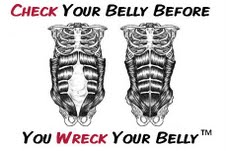Ab Separation Rehab
Learn the tools to Rebuild Your Core Strength & Treat Diastasis Recti
Specializing in the Tupler Technique® - the only research based exercise program that is proven in treating and reducing a diastasis.
Servicing Northern CA*
Ab Separation Rehab ® *located in Orinda, CA:
providing services to Lamorinda, Walnut Creek, Berkeley and Northern CA, able to travel to Southern CA
Contact Information: 415-850-4065, abseparation@gmail.com
The Tupler Technique® Program has been designed as a do it yourself rehabilitation program. Julie Tupler has designed the program to run over a term of 18 weeks but it is intended to be something you do for the rest of your life. During the first six weeks you will learn the 4- step Tupler Technique® and then in week six of the program, once you have strengthened your transverse muscle, you will learn how to incorporate the Tupler Technique® into any exercise routine. You need to wear the splint until your diastasis is 2 finger widths or less. To prevent the diastasis from opening up again, you will need to continue doing the Tupler Technique® exercises and performing activities of daily living properly.
Until you strengthen your abdominals and know how to use them correctly when working out, we strongly advise you NOT to do any other strengthening/toning program or sporting activities during the first six weeks. Until you know how to modify other exercise programs, doing these programs can make your diastasis larger. Walking, elliptical machines without the handles and light jogging are acceptable activities to do.
The first six weeks is the foundation of the program. This is clearly spelled out on a weekly basis in the Tupler Technique® Guidebook and DVD. I became licensed in this technique to support you and help you find success with the Tupler Technique. I generally see clients one time in week one, another time at the end of week three and a final time in week six of the program. If you have been doing the program on your own, you may find success in seeing me for just a single session.
I have also been educated to work with each individual on a case by case basis and I am able to make adjustments and modifications to the program based on your individual needs. I teach this program privately, semi-privately or in a group setting.
It is HIGHLY recommended that you watch the corresponding Diastasis Rehab DVD before you start to work with me. There is a lot of information to learn, so doing this will make the program work better for you.
The 4-Step Tupler Technique® is:
1. Tupler Technique® Exercises (Elevator, Contracting & Headlifts)
Tupler Technique® Exercises (Elevator, Contracting & Headlifts)
2. Splinting with the Diastasis Rehab Splint®
Splinting with the Diastasis Rehab Splint®
3. Using your abdominals correctly with activities of daily living
Using your abdominals correctly with activities of daily living
4. Getting up and down correctly
Getting up and down correctly
To support you in getting the full benefit of the program, it is important to have the following items:
- The corresponding Diastasis Rehab or Ab Rehab DVD
- Diastasis Rehab Splint®
- Tupler Technique® Guidebook
The purpose of the six week program is to get you started with the healing process. Depending on the severity of your diastasis it could take you anywhere from six weeks to over a year to close your diastasis. However, you will be thrilled to see the healing process starting within three weeks. We recommend that you document your journey by taking before and after photos from the front and the side and writing down the size of your diastasis as well as the size of the circumference of your belly. There is a place in your guidebook to do this. It will motivate you to see the results of your efforts.
Once you close your diastasis you do not need to wear a splint. However, you will need to continue to do the other three steps of the Tupler Technique® program for the rest of your life! Remember, it is hard to close a diastasis..it is easy to open it back up again!
Splinting
The Program
Splinting is an important step of the Tupler Technique® However, just wearing the Diastasis Rehab Splint® will not close your diastasis. You must do all 4 steps of the program. The purpose of the splint is to approximate or manually bring together the two separated muscles. This puts the connective tissue in a better position to heal and puts the muscles in a better position making the exercises more effective. Wearing the splint will NOT weaken your muscles if you are doing the entire program. You will be strengthening your abdominal muscles while you are wearing this splint. Strengthening your transverse muscle with the Tupler Technique® exercises and performing activities of daily living properly will make it possible for your transverse muscle to then do the work of an abdominal binder.
The area you are splinting, between your ribs and your pelvis, is a hard area to splint. The splint may not stay in place. There are several things you can do if you have this problem. Keep your back flat when getting up and down from a seated position or when bending over or wear it over a fitted undergarment. Wearing a splint all the time (which is what you need to do) can be uncomfortable. However, if you broke your leg you would have to wear a cast all the time to heal the bones no matter how uncomfortable it was! The same concept applies when wearing a splint. You need to wear the splint all the time like a cast. You even need to sleep with it. You can take it off when you bathe. You need to wear the splint until the diastasis reaches 2 finger widths or less and the connective tissue is strong and shallow. Once you close the diastasis, you must still continue to do the other three steps to keep the diastasis closed. That means you need to do the exercises for the rest of your life! Click here to learn how to put on the new and improved Tupler splint.
Contraindications for Wearing a Splint: Sometimes it is best not to wear a Diastasis Rehab Splint®. When you bring the two separated muscles together you will be putting the displaced abdominal organs back to their original position. This may cause pressure on the organs above (heart) and below (pelvic floor) them. So if you have any heart conditions it is best to not wear a splint. You can still do the exercises and "hold" a splint when doing the seated and backlying exercises. If you have any type of prolapse you can wear the splint if you do not feel pressure on your pelvic floor. If you do feel pressure, then just "hold" a splint when doing the seated or backlying exercises. If you are wearing the splint, make sure it is not too tight. Also make sure when you do the exercises that you do the following:
1. Count out loud. Holding your breath puts pressure on the pelvic floor and weak connective tissue
2. Engage both the abdominal muscles and the pelvic floor muscles when doing the seated and backlying exercises
3. Decrease the amount of repetitions of the contracting exercises from 100 to 25 or less.
The Tupler Technique® Guidebook takes all the information in the DVD and organizes it for you. It gives a summary of the 4 steps, a place to put your measurements of your belly and diastasis and a chart with what you need to do daily over the 18 weeks and how and when to progress the exercises. Remember to take your before photos! It will inspire you to continue the program.
The Guidebook
Expert Opinions/Testimonials:
"Julie Tupler is an expert on diastasis recti" - Dr.Oz (Oprah & Friends)
"By continuing to do the Tupler Technique exercises every day, your Mummy Tummy goes away and that aching back will disappear as well". - Elle Macpherson (actress/model/businesswoman)
"The Tupler Technique ...is great for maintaining the results of stomach surgery". - Dr Sharon Giese, plastic surgeon (in New Beauty Magazine vol 4 issue 4 Fall/Winter 2008)
RESEARCH:
A study was conducted at Columbia University Program in Physical Therapy . Results demonstrated that the women utilizing the Tupler Technique® exercises had a smaller diastasis than the control group who did not do these exercises.
” Journal of Women's Health Physical Therapy Volume 29, No. 1, Spring, 2005
PRESS:
Jewel and Julie Tupler
A Common Problem for New Moms and Professional Athletes
Learn the right way to get rid of your post baby pooch!
Preparing for the marathon of labor
- Diastasis Rehab or Ab Rehab DVD
- Diastasis Rehab Splint®
- Tupler Technique® Guidebook
Tupler Tehcnique Products
Checking for Diastasis
A diastasis can be checked both during and after pregnancy. The object is to determine how many fingers will fit in the space between the two recti muscles. You also want to determine the condition of the connective tissue. The deeper your fingers will go towards your spine, the weaker the connective tissue. If you feel a pulsing while you are checking, this is a sign of very weak connective tissue. Start with your middle three fingers. You will also want to measure your waist before you start on the program. This measurement will get smaller as the muscles start coming together.
Lie on your back with yourknees bent. Place your fingers in your belly button. Your fingers should be pointing in the direction of your toes. Relax your abdominal muscles and lift your head. If you are holding your abdominal muscles in as you check it will give you a false reading as this will make the diastasis appear smaller. The muscles will get closer together the higher you lift your head.
To get a more accurate reading, it is important to check yourself when you first start feeling the muscles coming together. You might have to come up and down a few times so you can feel how the muscles work. If you don't feel the two ridges of the muscles with 3 fingers you may have to put more fingers in. If you see the football- like ridge you should start by using 4 to 5 fingers. You may even have to use 2 hands if your diastasis is very large.
To watch a video of how to check yourself accurately please click here.





